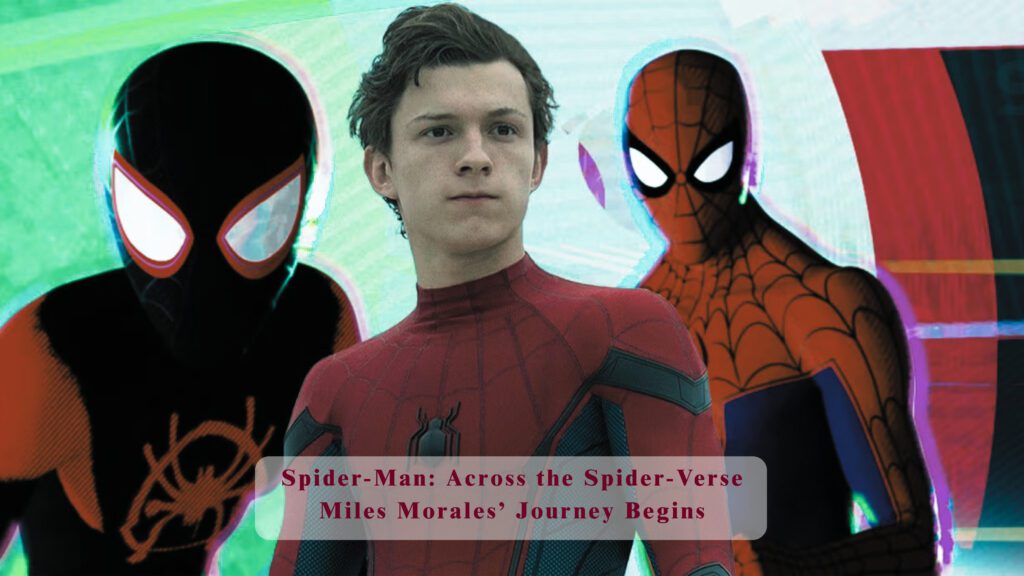Stepping Into the Multiverse Again
The lights dimmed, the theater grew silent, and within moments of Spider Man Across the Spider Verse beginning, I knew this was going to be more than just a follow-up to Into the Spider-Verse. It felt… bigger. Not just in terms of visuals, but in ambition. The first movie already proved that an animated Spider-Man film could shatter expectations, but this sequel practically leaps out of the frame, grabs you by the collar, and yanks you into its swirling web of dimensions.
For me, the title itself — Spider Man Across the Spider Verse — feels less like a label and more like a promise. A promise that we’re about to explore endless worlds, each stranger and more beautiful than the last, while still holding onto the personal heart of Miles Morales’ story. And right from the start, it delivers on that promise in ways I didn’t anticipate.
Life After Saving the Day
When the first film ended, Miles was no longer the unsure kid struggling to keep up with seasoned heroes. He was Spider-Man — his universe’s Spider-Man. Confident, swinging through Brooklyn with style, and embracing his role. But as Spider-Man Across the Spider-Verse quickly reminds us, being a hero isn’t a straight path upward. It’s messy, complicated, and at times unbearably lonely.
Miles’ double life is catching up to him. His parents notice something’s off — the missed homework, the sudden disappearances, the look in his eyes when he thinks no one’s watching. Jefferson Davis and Rio Morales want to understand him, but they can’t, not fully, because Miles refuses to reveal the truth. And honestly, that secrecy isn’t about trust — it’s about fear. Fear of what might happen if they knew, fear of putting them in danger, fear of letting them down.
Gwen Stacy’s World
Spider man movie Before we dive too deep into Miles’ latest challenge, the movie pulls us into another web — Gwen Stacy’s. This shift is one of the film’s most brilliant moves. Instead of keeping her as a supporting character, we get to live in her world for a while.
Gwen’s universe is awash in soft, shifting colors that mirror her emotions — a watercolor dream with an undercurrent of sadness. Her relationship with her father, Captain George Stacy, is strained to the breaking point. He believes Spider-Woman is a criminal, not knowing that his own daughter wears the mask. Every scene between them is a tug-of-war between love and duty, and it adds layers to Gwen’s character that make her more than just Miles’ friend or love interest.
When Gwen and Miles finally reunite, it’s electric. There’s that unspoken understanding between them — the kind that only comes from sharing the same impossible burden. And yet, there’s also hesitation, because secrets still linger between them.
The Spot — From Laughable to Lethal
Then we meet The Spot. At first, I couldn’t take him seriously — and neither can Miles. He’s clumsy, awkward, even a little funny with his self-deprecating humor. But like a slow-burning fuse, the danger he represents grows with every scene.
The Spot’s ability to create living, moving portals makes for some inventive action sequences early on, but it’s only when his powers evolve that the real threat becomes clear. He’s not just a nuisance in Brooklyn — he’s a walking gateway to every reality. And the moment I realized that, I understood why this oddball was positioned as the main antagonist.
The Spider Society — A Multiversal Maze
One of the movie’s show-stopping moments is the reveal of the Spider man Society. Imagine every Spider Man variant you’ve ever heard of — and hundreds you haven’t — all gathered in one place. The visual detail here is staggering; it’s like a living encyclopedia of Spider-Man history.
But beyond the spectacle, there’s tension. This society, led by Miguel O’Hara (Spider-Man 2099), isn’t a loose group of do-gooders — it’s an organized force with strict rules about “canon events” that must happen in every Spider-person’s life. Miguel’s cold, calculated leadership clashes instantly with Miles’ belief in forging his own path. The idea that tragedy is inevitable doesn’t sit well with him — and honestly, it didn’t sit well with me either.
The Choice No Hero Wants

Midway through Spider Man Across the Spider-Verse, the emotional stakes hit like a punch to the gut. Miles discovers that his future holds a canon event — one that could take the life of someone he loves. Miguel insists that stopping it would unravel the multiverse, erasing entire worlds.
This is the movie’s beating heart: the question of whether destiny is unchangeable. Miles doesn’t just want to save the day; he wants to save everyone. That defiance is what makes him different from every other Spider-Person in the Society, and it’s what sets him on a collision course with them.
Animation That Speaks Its Own Language
Even if you stripped away the dialogue, the visuals in Spider Man Across the Spider-Verse could tell the entire story. Each universe has its own animation style, designed not just for beauty but for meaning.
Gwen’s world bleeds color with every shift in her feelings. The bustling, graffiti-splashed streets of Miles’ Brooklyn pulse with youthful energy. Miguel’s futuristic city is sharp, angular, and drenched in neon — a place where the air itself feels tense. The artistry is so intentional that every frame could be paused and studied like a painting.
A Chase for the Ages
When the Spider man Society turns on Miles, the result is one of the most exhilarating chases I’ve ever seen in animation. The sheer creativity of each Spider-Person’s abilities, combined with the constantly shifting backgrounds, makes it an overwhelming visual experience — in the best way possible.
But beneath the thrill, the scene is heartbreaking. Miles isn’t just running for freedom — he’s running from an entire community of people who should have been his allies. By the time the chase ends, the rift between him and the rest of the Spider-Verse feels permanent.
That Ending…
And then comes the ending. Without spoiling too much, let’s just say the final act doesn’t wrap things up neatly. Instead, it throws Miles into a version of reality that’s unlike anything we’ve seen before — darker, more dangerous, and full of questions that won’t be answered until the next film.
This cliffhanger isn’t a cheap trick; it’s a statement. The journey isn’t over — in fact, it’s only just beginning.
Closing Thoughts
By the time the credits rolled, I wasn’t just impressed — I was invested. Spider Man Across the Spider-Verse is more than a superhero movie; it’s a story about identity, choice, and the courage to challenge what’s “supposed” to happen.
Miles Morales starts the film as a hero already in his stride, but by the end, he’s something more — a symbol of defiance in a universe that says “no.” And personally? I can’t wait to see where that defiance takes him next.





Thank you for your sharing. I am worried that I lack creative ideas. It is your article that makes me full of hope. Thank you. But, I have a question, can you help me?